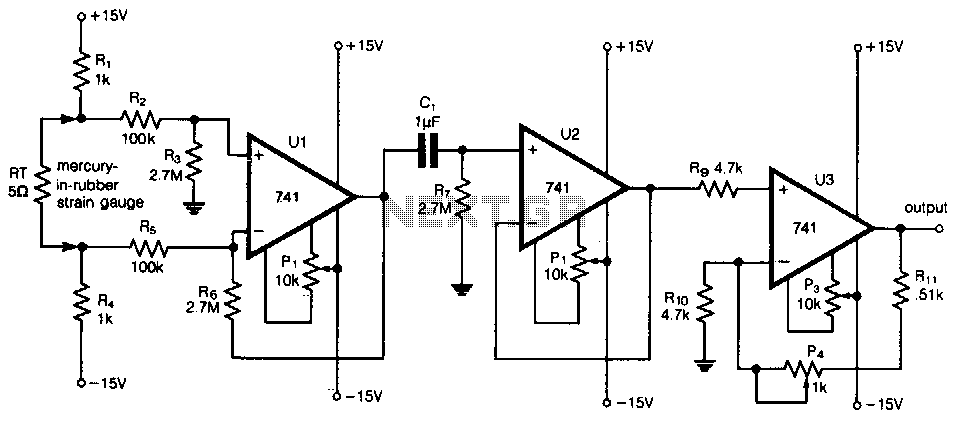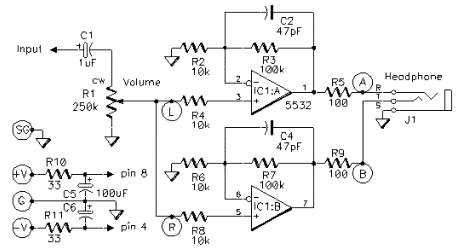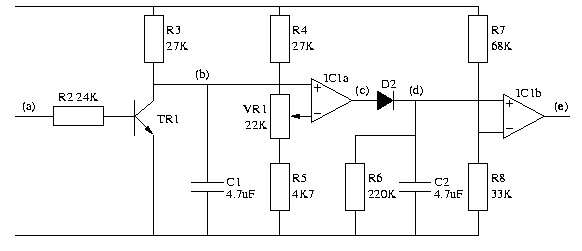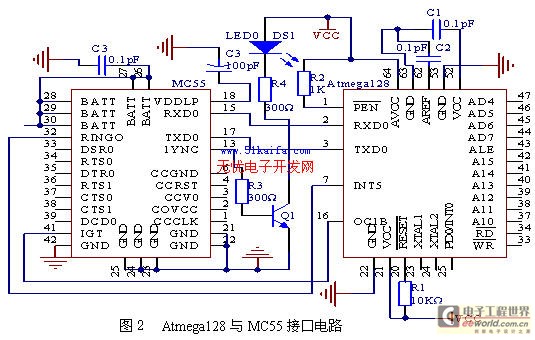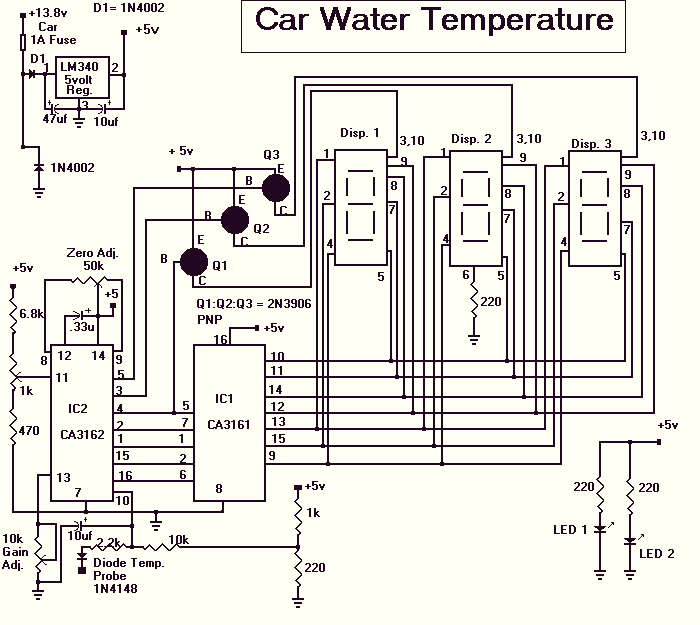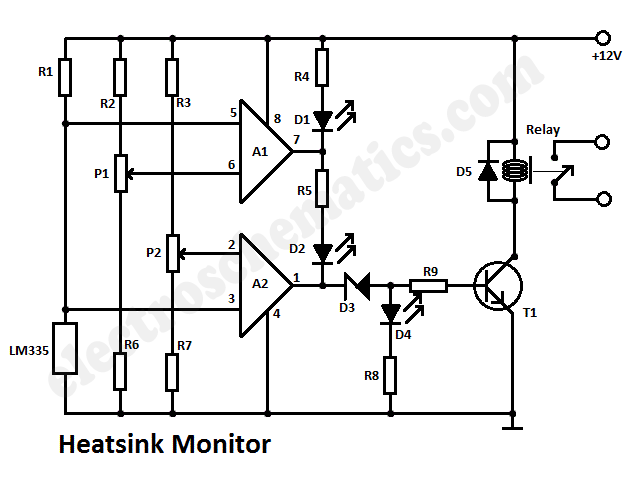
Plant-water monitor
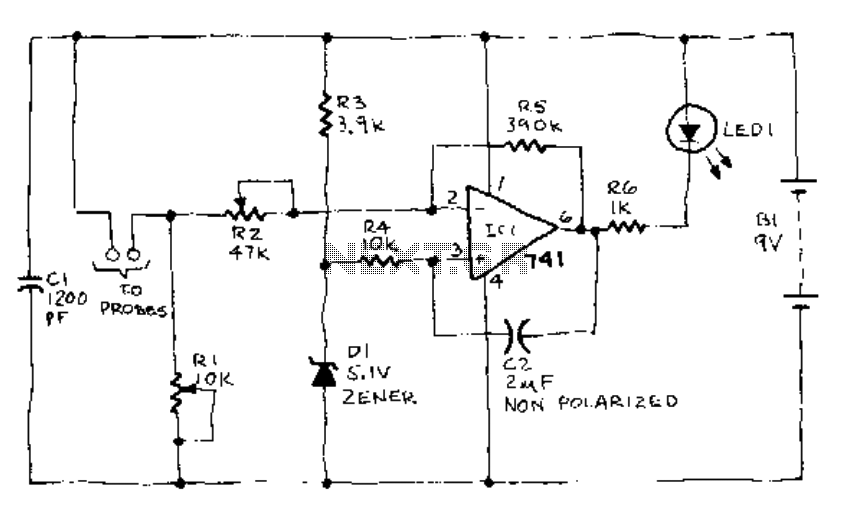
When the soil is moist, the LED glows. If the moisture falls below a certain predetermined level, the LED begins to flash. If there is still less moisture, the LED turns off. To calibrate, connect the battery and insert the probe into a container of dry soil. Set R1 to its maximum value then reduce that resistance until the LED begins to flash. The range over which the LED flashes before going out is adjusted using R2.
The described circuit functions as a soil moisture indicator using an LED to provide visual feedback on the moisture levels in the soil. The system employs a moisture sensor, typically consisting of two probes that can be inserted into the soil. When the soil is adequately moist, the probes allow current to flow, illuminating the LED. As moisture levels decrease, the circuit is designed to respond accordingly.
The LED remains lit while moisture is present above a predetermined threshold. Once the moisture content drops below this threshold, the LED begins to flash, indicating a warning state. If the moisture level continues to decline and falls below another critical threshold, the LED will turn off completely, signifying that the soil is too dry for optimal plant health.
Calibration of the circuit is essential for accurate operation. This is performed by connecting a battery to the circuit and inserting the moisture sensor probes into dry soil. Initially, resistor R1 should be set to its maximum resistance. This adjustment allows the user to decrease the resistance gradually until the LED begins to flash, indicating that the circuit is responsive to the moisture level.
Resistor R2 plays a crucial role in fine-tuning the sensitivity of the moisture detection. By adjusting R2, the user can set the specific moisture range over which the LED will flash before it turns off. This adjustment ensures that the circuit can be tailored to different soil types and moisture conditions, providing flexibility for various applications, such as gardening or agricultural monitoring.
Overall, this circuit provides a straightforward and effective means of monitoring soil moisture levels, with visual indicators that facilitate timely intervention to maintain optimal moisture conditions for plant growth.When the soil is moist, the LED glows. If the moisture falls below a certain predetermined level, the LED begins to flash. If there is still less moisture, the LED turns off. To calibrate, connect the battery and insert the probe into a container of dry soil. Set R1 to its maximum value then reduce that resistance until the LED begins to flash. The range over which the LED flashes before going out is adjusted using R2. 🔗 External reference
The described circuit functions as a soil moisture indicator using an LED to provide visual feedback on the moisture levels in the soil. The system employs a moisture sensor, typically consisting of two probes that can be inserted into the soil. When the soil is adequately moist, the probes allow current to flow, illuminating the LED. As moisture levels decrease, the circuit is designed to respond accordingly.
The LED remains lit while moisture is present above a predetermined threshold. Once the moisture content drops below this threshold, the LED begins to flash, indicating a warning state. If the moisture level continues to decline and falls below another critical threshold, the LED will turn off completely, signifying that the soil is too dry for optimal plant health.
Calibration of the circuit is essential for accurate operation. This is performed by connecting a battery to the circuit and inserting the moisture sensor probes into dry soil. Initially, resistor R1 should be set to its maximum resistance. This adjustment allows the user to decrease the resistance gradually until the LED begins to flash, indicating that the circuit is responsive to the moisture level.
Resistor R2 plays a crucial role in fine-tuning the sensitivity of the moisture detection. By adjusting R2, the user can set the specific moisture range over which the LED will flash before it turns off. This adjustment ensures that the circuit can be tailored to different soil types and moisture conditions, providing flexibility for various applications, such as gardening or agricultural monitoring.
Overall, this circuit provides a straightforward and effective means of monitoring soil moisture levels, with visual indicators that facilitate timely intervention to maintain optimal moisture conditions for plant growth.When the soil is moist, the LED glows. If the moisture falls below a certain predetermined level, the LED begins to flash. If there is still less moisture, the LED turns off. To calibrate, connect the battery and insert the probe into a container of dry soil. Set R1 to its maximum value then reduce that resistance until the LED begins to flash. The range over which the LED flashes before going out is adjusted using R2. 🔗 External reference
Warning: include(partials/cookie-banner.php): Failed to open stream: Permission denied in /var/www/html/nextgr/view-circuit.php on line 713
Warning: include(): Failed opening 'partials/cookie-banner.php' for inclusion (include_path='.:/usr/share/php') in /var/www/html/nextgr/view-circuit.php on line 713
